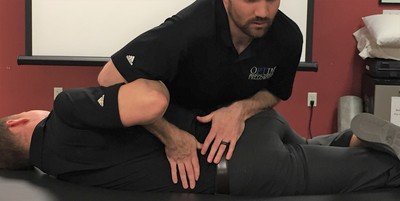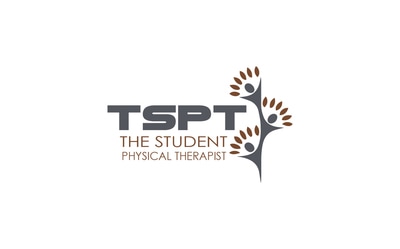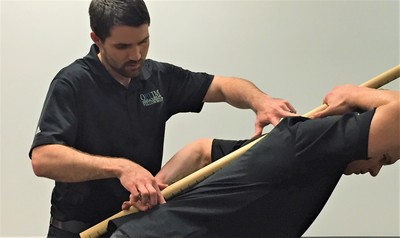- Home
- About Us
- TSPT Academy
- Online Courses
-
Resources
- Newsletter
- Business Minded Sports Physio Podcast
- Day in the Life of a Sports PT
- Residency Corner
-
Special Tests
>
-
Cervical Spine
>
- Alar Ligament Test
- Bakody's Sign
- Cervical Distraction Test
- Cervical Rotation Lateral Flexion Test
- Craniocervical Flexion Test (CCFT)
- Deep Neck Flexor Endurance Test
- Posterior-Anterior Segmental Mobility
- Segmental Mobility
- Sharp-Purser Test
- Spurling's Maneuver
- Transverse Ligament Test
- ULNT - Median
- ULNT - Radial
- ULNT - Ulnar
- Vertebral Artery Test
- Thoracic Spine >
-
Lumbar Spine/Sacroiliac Joint
>
- Active Sit-Up Test
- Alternate Gillet Test
- Crossed Straight Leg Raise Test
- Extensor Endurance Test
- FABER Test
- Fortin's Sign
- Gaenslen Test
- Gillet Test
- Gower's Sign
- Lumbar Quadrant Test
- POSH Test
- Posteroanterior Mobility
- Prone Knee Bend Test
- Prone Instability Test
- Resisted Abduction Test
- Sacral Clearing Test
- Seated Forward Flexion Test
- SIJ Compression/Distraction Test
- Slump Test
- Sphinx Test
- Spine Rotators & Multifidus Test
- Squish Test
- Standing Forward Flexion Test
- Straight Leg Raise Test
- Supine to Long Sit Test
-
Shoulder
>
- Active Compression Test
- Anterior Apprehension
- Biceps Load Test II
- Drop Arm Sign
- External Rotation Lag Sign
- Hawkins-Kennedy Impingement Sign
- Horizontal Adduction Test
- Internal Rotation Lag Sign
- Jobe Test
- Ludington's Test
- Neer Test
- Painful Arc Sign
- Pronated Load Test
- Resisted Supination External Rotation Test
- Speed's Test
- Posterior Apprehension
- Sulcus Sign
- Thoracic Outlet Tests >
- Yergason's Test
- Elbow >
- Wrist/Hand >
- Hip >
- Knee >
- Foot/Ankle >
-
Cervical Spine
>
- I want Financial Freedom
- I want Professional Growth
- I want Clinical Mastery
Supine to Long Sit Test
Purpose: To assess the contribution of the sacroiliac joint to an apparent leg length discrepancy.
Test Position: Supine.
Performing the Test: The examiner grasps the patient's legs above the ankles and fully flexes them, then extends them. The examiner then compares the two medial malleoli to see if a difference in position is present. Have the patient sit up, while keeping the legs extended. Compare the position of the medial malleoli again to see if there is a change. If there is a posterior innominate, the leg that appeared shorter will lengthen with the sit up. If there is an anterior innominate, the leg that appeared longer will shorten with the sit up.
Diagnostic Accuracy: Sensitivity: .44; Specificity: .64 ("Four clinical tests of sacroiliac joint dysfunction: the association of test results with innominate torsion among patients with and without back pain").
Importance of Test: This test can help in differentiating between a true leg length discrepancy and sacroiliac dysfunction, which obviously will help guide your plan of care by utilizing muscle energy techniques, manipulations, core exercises, etc. The reason a posterior innominate appears to lengthen following the situp is because activation of the hip flexors anteriorly rotates the innominate to return it to its normal position. A posterior innominate makes a leg appear shorter than the opposite side due to the altered position of the acetabulum. The opposite applies to the anterior innominate due to the restrictions (and in this case mobilizing nature) of the posterior tissues.
Note: tests should only be performed by a properly trained health care practitioner.
Test Position: Supine.
Performing the Test: The examiner grasps the patient's legs above the ankles and fully flexes them, then extends them. The examiner then compares the two medial malleoli to see if a difference in position is present. Have the patient sit up, while keeping the legs extended. Compare the position of the medial malleoli again to see if there is a change. If there is a posterior innominate, the leg that appeared shorter will lengthen with the sit up. If there is an anterior innominate, the leg that appeared longer will shorten with the sit up.
Diagnostic Accuracy: Sensitivity: .44; Specificity: .64 ("Four clinical tests of sacroiliac joint dysfunction: the association of test results with innominate torsion among patients with and without back pain").
Importance of Test: This test can help in differentiating between a true leg length discrepancy and sacroiliac dysfunction, which obviously will help guide your plan of care by utilizing muscle energy techniques, manipulations, core exercises, etc. The reason a posterior innominate appears to lengthen following the situp is because activation of the hip flexors anteriorly rotates the innominate to return it to its normal position. A posterior innominate makes a leg appear shorter than the opposite side due to the altered position of the acetabulum. The opposite applies to the anterior innominate due to the restrictions (and in this case mobilizing nature) of the posterior tissues.
Note: tests should only be performed by a properly trained health care practitioner.
|
|
|
References:
Levangie PK. "Four clinical tests of sacroiliac joint dysfunction: the association of test results with innominate torsion among patients with and without back pain." Phys Ther. 1999 Nov;79(11):1043-57. Web. 08/19/2012.
Levangie PK. "Four clinical tests of sacroiliac joint dysfunction: the association of test results with innominate torsion among patients with and without back pain." Phys Ther. 1999 Nov;79(11):1043-57. Web. 08/19/2012.
Copyright © The Student Physical Therapist LLC 2023




